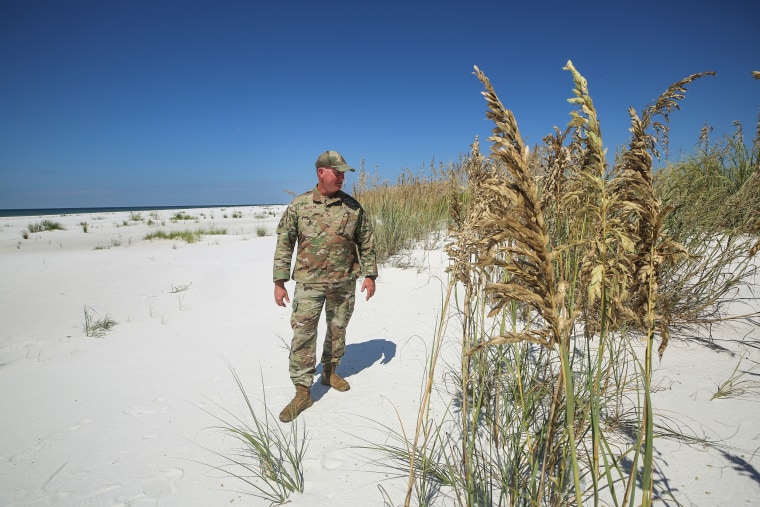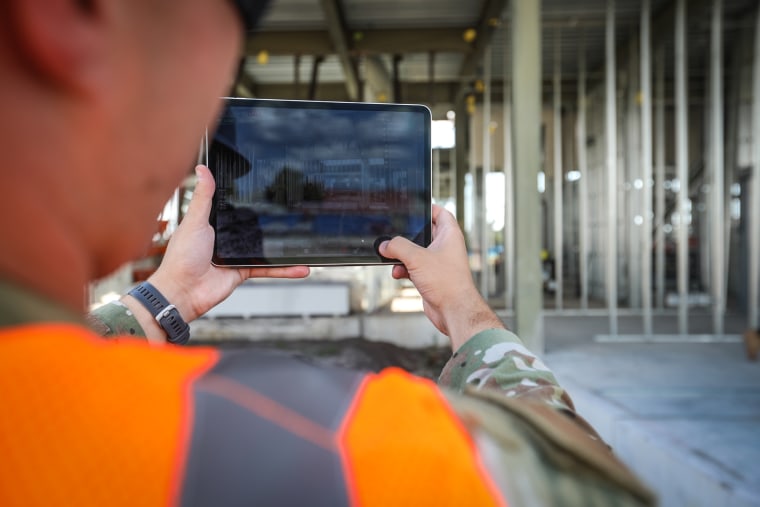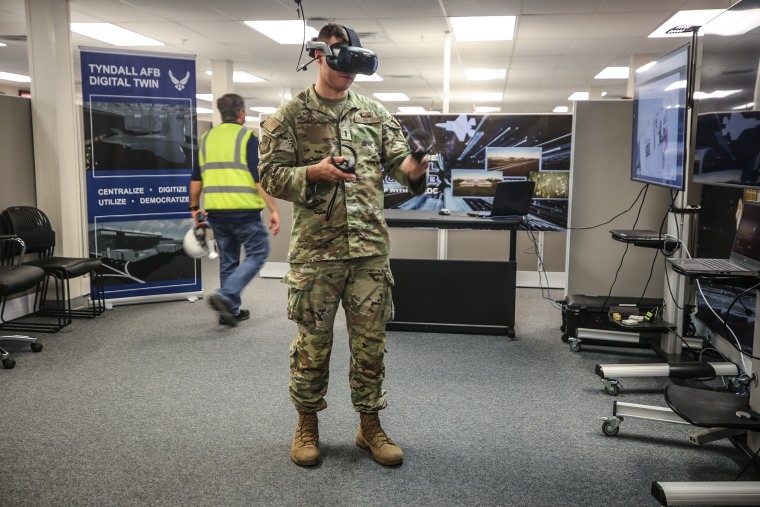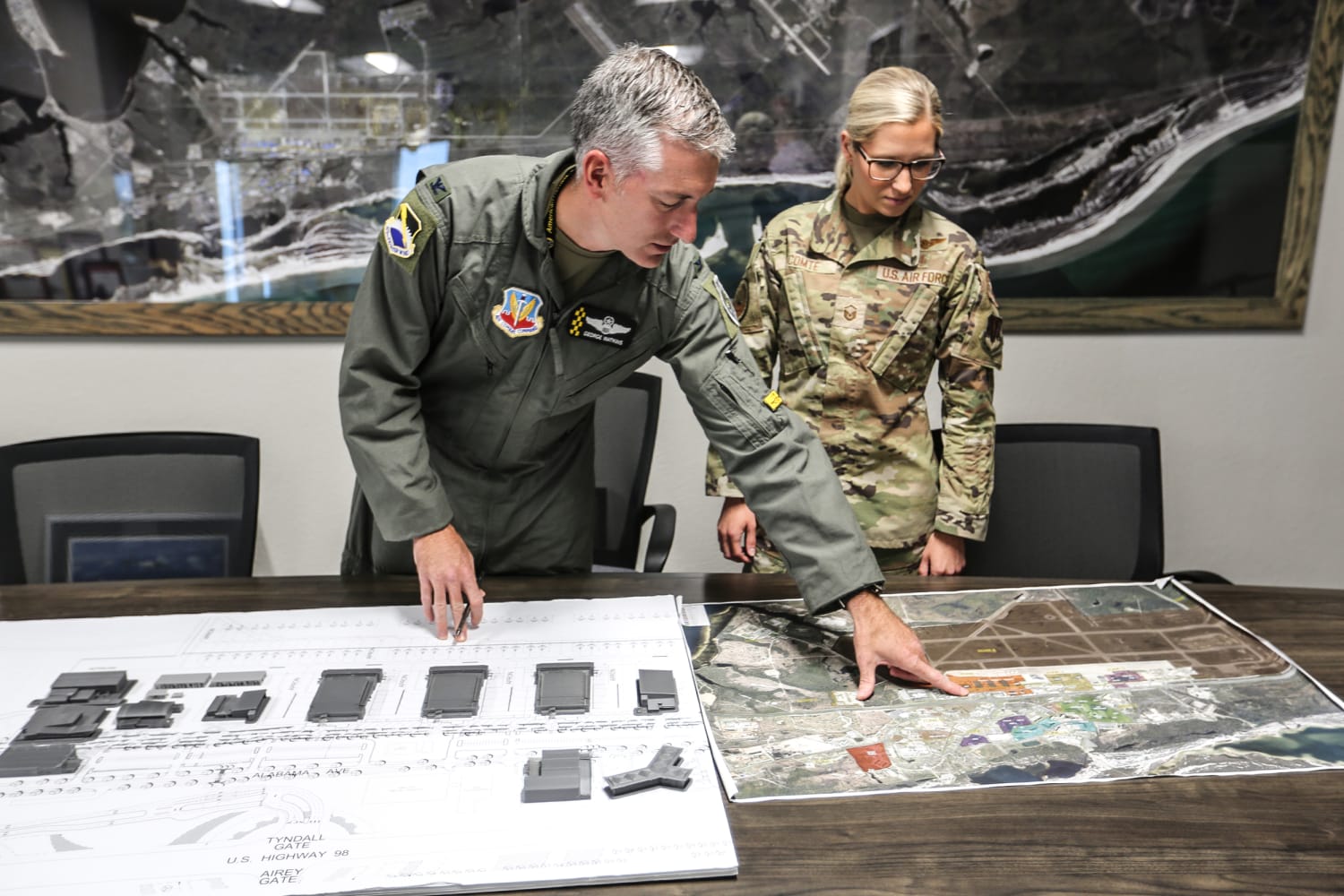A utility terrain vehicle ride past the bay and out to a barrier island shows just how expansive the 129-mile coastline restoration project has become.
Col. Robert Bartlow, the chief of the Natural Disaster Recovery Division within the Air Force Civil Engineer Center, and his team were tasked with exactly how to use the Florida coast’s powdery beaches to their advantage.
“The natural environment provides that first line of defense against storms,” he said.
Included in that first line of defense will be a salt marsh enforcement, a built-out shoreline, a protective oyster reef and reinforced sand dunes.
Walking toward the sand dunes, Bartlow joked about being in engineering school never thinking he’d be working with a natural environment.

“It’s not something we traditionally do in Air Force civil engineering,” he said. Now, maneuvering around sea oats (the coastal plants that dot the area), he explained they are “the glue that holds these dunes together.”
“When a storm comes through and the storm surge comes in, having these dunes built up provides a natural barrier against that storm surge … and protects the base that sits on the other side,” he said.
Going beyond physical measures, the Defense Department asked Air Force engineers to develop new technology that helps forecast threats from future storms. Lt. Nicholas Cap, the chief of innovation within the Natural Disaster Recovery Division, showed off through a virtual reality headset what they developed.
The technology, known as the base’s “digital twin,” aggregates every planning and design detail of the rebuild and allows engineers to use virtual and augmented reality to prepare for challenges before they occur.


Cap is able to interact with the new hangers, which will house F-35 fighter jets next year.
“I can now look and see, OK, we know the storm is going to be a Category 3. … Let’s run it through the base on the digital twin and see, OK, these facilities are able to withstand that,” he said. “Instead of being reactive, it allows us to be proactive to future threats.”
Watkins said the Air Force plans to use what it learns from Tyndall to help establish best practices for fortifying nonmilitary buildings along the Florida coast.
“I certainly hope that what we do here and what we learn here can be scaled and can be shared,” Watkins said. “There’s a lot of pressure to be critical of what we do and make sure that we’re doing it in the right way … so that we can share that with other communities, and other other installations around the coastline.”
Source: | This article originally belongs to Nbcnews.com










